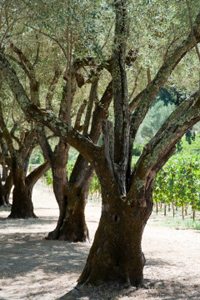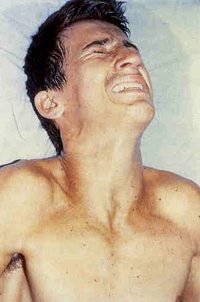How Derived: Spiritual Communication
Researcher: Ian Stevenson, MD
From: European Cases of the Reincarnation Type, by Ian Stevenson, MD
Article by: Walter Semkiw, MD
Introducing Francisco Goya & Leocadia and Rosario Weisz
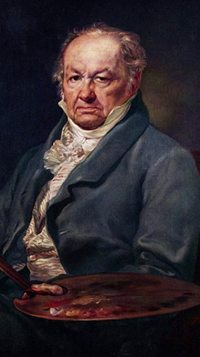 Francisco Goya was born in 1749 and became one of the most famous Spanish painters in history. The Spanish king, Ferdinand VII, appointed Goya as the Court Painter. Goya, unfortunately, found King Ferdinand a tyrant and in 1819, he decided to move away from the court in Madrid to a home in the countryside, outside of the city.
Francisco Goya was born in 1749 and became one of the most famous Spanish painters in history. The Spanish king, Ferdinand VII, appointed Goya as the Court Painter. Goya, unfortunately, found King Ferdinand a tyrant and in 1819, he decided to move away from the court in Madrid to a home in the countryside, outside of the city.
To his new home outside of Madrid, Goya brought a cousin, Leocadia Weisz, who was born in 1790 and was thus 40 years younger than Goya. Leocadia was married previously and had two children, Guillermo and Rosario, through that marriage, but her husband had abandoned the family. Rosario was born in 1814, just before her father left the home.
Rosario was 5 years old when she and her mother moved in with Goya in his country home outside of Madrid in 1819. Leocadia, who was initially hired as a housekeeper, became Goya’s mistress.
In 1824, Goya was alarmed by King Ferdinand’s repression of a liberal political movement and decided to leave Spain altogether. He moved to Bordeaux, France, where he bought a house and brought Leocadia and Rosario with him. The two women cared for Goya until he died in 1829.
After Goya’s death, Leocadia and Rosario moved back to Madrid, where Rosario pursued a career as an artist. Rosario became a copyist of paintings at the Prado museum. She was later appointed as a Professor of Drawing to Queen Isabella II.
Ian Stevenson has related that Goya had a known habit of painting very fast.
Past Life Ability: Henrietta’s Innate Talent for Art
 Henrietta Roos was born in 1903 in Amsterdam, Holland. Early on, she demonstrated a natural talent for drawing, painting and music. At the age of 5, she used a crayon to draw an accurate portrait of her father. At 12 years of age, she did an oil painting of two birds and at the age to 16, she started painting miniature portraits. When she was 18, she painted a portrait of her mother. Henrietta wanted to pursue a career as an artist, but her parents disapproved and would not allow her to do so.
Henrietta Roos was born in 1903 in Amsterdam, Holland. Early on, she demonstrated a natural talent for drawing, painting and music. At the age of 5, she used a crayon to draw an accurate portrait of her father. At 12 years of age, she did an oil painting of two birds and at the age to 16, she started painting miniature portraits. When she was 18, she painted a portrait of her mother. Henrietta wanted to pursue a career as an artist, but her parents disapproved and would not allow her to do so.
At the age to 22, Henrietta married Franz Weisz, a Hungarian pianist. Henrietta noted that she was more attracted to his name than his personality. The marriage allowed her to pursue her desire to be an artist and at the age of 24, she entered the Dutch Royal Academy of Art, where she focused on painting.
Her talent was noticed and for three years in a row, she was awarded the Royal Award from Queen Wilhemina, which allowed her to go study in Paris.
Past Life Attraction: Henrietta’s Affinity for the Name Weisz
Henrietta divorced Weisz at the age of 30. Though the custom in Holland was for a divorced woman to reassume her maiden name, Henrietta resisted. She told her mother, regarding the name Weisz:
“I don’t know, it is a strange feeling. I can’t explain, that name suits me. I feel one with it, it is more me than my own name Roos. Each time I call my self that way I have the feeling I’m talking about someone else.” (1)
She then moved to France and became fluent in French in a short period of time. For the next 20 years, she made her living as a painter in France, even serving as an official copyist for the Louvre Museum in Paris.
Mediumship: A Spirit Being Speaks to Henrietta and Paints a Portrait through Her in the Dark
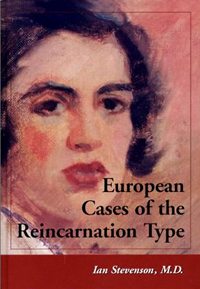 One evening in the year 1936, when she was 33 years old, Henrietta went to bed early, as she was feeling ill. Suddenly, a voice spoke. The voice seemed to be coming from the center of her forehead. The voice said:
One evening in the year 1936, when she was 33 years old, Henrietta went to bed early, as she was feeling ill. Suddenly, a voice spoke. The voice seemed to be coming from the center of her forehead. The voice said:
“Don’t be so lazy, get up and work.” (2)
Henrietta didn’t know what to make of this and she tried to ignore the voice, but it returned and made the same statement a second time. Henrietta still stayed in bed and tried to go to sleep. The voice then spoke a third time, but more vigorously and emphatically:
“Don’t be so lazy, get up and work.” (3)
Henrietta finally heeded the voice and got out of bed. She put her easel under the tiny electric light in her small room. She then felt a force enter her, which made her move the easel to the darkest corner of the room, where she could not see anything at all. Let us let Henrietta describe what happened next:
“My palette, still full of paints, was on the table, also a little canvas board. This I took—and I started to paint, hardly knowing what I was doing, in a feverish haste, for 45 minutes, when suddenly I felt my right become immensely heavy. I had to put down my brushes.” (4)
Henrietta was then finally able to go to sleep. When she awoke, she remembered the voice and that she had been painting in the dark. She wondered if it was all a dream. She jumped out of bed to look at the easel and found a beautiful portrait of a young girl with a far away look. The sight made Henrietta shiver. She was puzzled by this turn of events.
This painting of a beautiful woman is featured on the cover of Ian Stevenson’s book, European Cases of the Reincarnation Type, and is provided above and to the right.
A Clairvoyant Tells Henrietta of her Past Life Relationship with Francisco Goya
 Henrietta quickly summoned a friend to see the portrait, who was astonished at the quality of the painting. Her friend exclaimed:
Henrietta quickly summoned a friend to see the portrait, who was astonished at the quality of the painting. Her friend exclaimed:
“Oh, Henriette, oh dear, this is wonderful, this is great! You know what we’re going to do? We’ll take it to a meeting for psychic research. Every Thursday afternoon they have a clairvoyant, extraordinarily gifted, and you take your little canvas along.” (5)
At the meeting, Henrietta found the clairvoyant to be a simple and poor looking elderly woman. Henrietta placed her canvas with portrait of the beautiful girl on a table next to the elderly woman, where others had also placed objects for the woman to examine. The clairvoyant took Henrietta’s painting and she fell into a trance. Henrietta said that the old woman closed her eyes and became very pale. Her lips trembled and the old woman very slowly said:
“I see very large golden letters—a name is spelled to me, G—O—Y—A…now he speaks to me. He says: He was a great Spanish painter. He had to fly from his country from his enemies, and it was you who received him in your home in a big southern city in France—until the end of his life. He still is so thankful for this that he wants to guide you—but he is not satisfied, you resist too much, you are too much tied up in your academic education—you never relax and let him guide you, you make it very difficult for him—he therefore made you paint in the dark, so that you couldn’t see what you were doing.” (6)
Henrietta and was impressed with the clairvoyant’s accurate statements. The elderly woman somehow knew that Henrietta was an artist, that she had an academic education in art and that she had done the painting of the girl in the dark.
Spiritual Guidance: Henrietta is Led to Information about a Past Life
Henrietta knew nothing about the personal life of Goya. The same day that she went to the clairvoyant, she had been invited for the first time to the home of a famous French musician. When she arrived that evening, the musician, coincidentally, had a biography on Goya on his bookshelf. She borrowed the book and when she got home, Henrietta opened it to somewhere in the middle of the book.
Again, as if by guidance, the book opened on a page that described how Goya lived with Leocadia and Rosario Weisz in Bordeaux, France, a large city in Southern France, who took care of him until his death.
Through this biography of Goya, the elderly clairvoyant’s statements seemed to be thus verified. Though the information gained, Henrietta finally understood why she had such an emotional attachment to the name Weisz. She had the same name, Weisz, even spelled in the same way, in a past incarnation in which she nurtured Goya in his latter years.
Once she understood this connection, the attachment to the name Weisz, which she retained for three years following her divorce, ended. From then on, she signed her name on paintings as “Henrietta Roos,” not “Roos-Weisz.”
Mediumship: Other Instances in which Henrietta served as a Medium for Francisco Goya
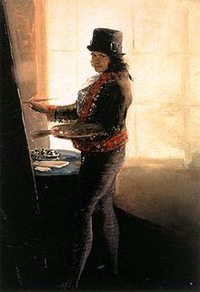 Henrietta had four other experiences in which it appeared that Goya was painting through her. In these instances, she painted very rapidly and produced beautiful pieces of art with ease. Recall that Goya had a tendency to pain very fast.
Henrietta had four other experiences in which it appeared that Goya was painting through her. In these instances, she painted very rapidly and produced beautiful pieces of art with ease. Recall that Goya had a tendency to pain very fast.
The most dramatic example involved a wealthy client in Nice, France, whose family hired Henrietta to do his portrait. Henrietta was very fatigued and when then entire family, including children and pets, surrounded her and her easel to watch her paint the portrait, she felt it was impossible for her do the painting.
In her despair, she made a strong mental plea to Goya to help her. Almost immediately, she started to paint rapidly and within a few minutes, produced and amazing likeness of her subject. It became one of her most acclaimed paintings.
Another example where it appeared that Goya took possession of Henrietta’s body occurred in 1960. She had been hired to do a painting of a subject from a photograph. Henrietta describes the scene:
“I had been wanting to paint this portrait many times in the past. The moment I wanted to start it something kept me from doing so, and each time I put down my brushes before even starting the first lines. This time I was not even thinking of doing it—and suddenly (it was a matter of seconds!) I was in front of my easel and did the portrait in a day and a half. Everything around me vanished. The whole world could have changed. I even forgot to eat. When my phone rang, I answered that I couldn’t talk. It was the same furious pace as I had felt when doing the…’girls face.” And another strange feeling is that now I’ve done it, I am constantly wondering how I did it.” (7)
This portrait was also considered among one of Henrietta’s best. Ian Stevenson observed that these events in which Goya appeared to take over Henrietta’s body occurred over a period of 40 years. Henrietta did not feel that Goya directed her or influenced her in her daily life between these occurrences.
Theses instances of Goya taking possession of Henrietta’s body to assist her in painting portraits is reminiscent to me of my experiences with Kevin Ryerson, a well-known trance medium who has been featured in Shirley MacLaine’s books. When Kevin goes into a trance and allows spirit beings to take over his body, they too can use Kevin’s body to make illustrations and diagrams during public demonstrations. After Kevin emerges from trance, he has no memory of what occurred during the session. In contrast, Henrietta seemed to be conscious of what was happening when Goya possessed her.
Past Life Identity: Was Henrietta Leocadia or Rosario Weisz?
Goya stated, through the elderly clairvoyant, that Henrietta had taken care of Goya in his home in Southern France. That same day, a biography on Goya was opened to the page that described how Leocadia and Rosario Weisz had taken care of Goya until his death in Bordeaux, France. From the information given, it was not clear whether Henrietta was Leocadia, the mistress of Goya, or Rosario, the daughter of Leocadia.
To make this determination, Ian Stevenson analyzed the personalities of Leocadia and Rosario to see which matched the character of Henrietta.
Stevenson found that Leocadia was hot-tempered, social, extroverted and a fan of circuses and fairs. She did not paint and did not seem to have much interest in art. Leocadia’s personality, thus did not match Henrietta’s personality, who as quiet and afraid of crowds, such as would be found at concerts, circuses and fairs.
Rosario, on the other hand, was not temperamental, was affectionate and was described as bright and cheerful. Rosario loved animals, as did Henrietta.
Like Henrietta, Rosario as a child had a natural talent for painting and music. Like Henrietta, Rosario did miniature portraits, which Goya praised in a letter:
“This amazing child wishes to do miniatures, and I wish it too; for it is perhaps the greatest phenomenon in the world to do what she does at her age.” (8)
Biographers have noted that Goya had a great attachment to Rosario and even referred to her as his own daughter. This attachment could explain Goya’s desire from te spirit world to assist Henrietta in her artistic development.
After Rosario and her mother returned to Madrid following Goya’s death, Rosario became a copyist of paintings at the Prado museum, just as Henrietta had became a copyist at the Louvre.
In 1840, Rosorio was appointed Professor of Drawing to Queen Isabella II. Later in 1840, she unexpectedly came down with a fever after she was caught in a riot. A biographer attributed the fever to extreme fright, which Rosario experienced when confronted with the angry mob. This reaction is consistent with Henrietta’s fear of crowds. Rosario died soon after, on July 31, 1840, at the young age of only 26.
Due to the similarities in personality, artistic and musical talent, and Goya’s known affection for Rosario, Ian Stevenson concluded that it was most likely that Henrietta Roos, also known as Henrietta Roos-Wiesz was Rosario Weisz in a past lifetime. The interval between Rosario’s death and Henrietta’s birth was 63 years.
Principles of Reincarnation & Understanding Past Lives
 If this very intriguing reincarnation case is accepted, it demonstrates the following principles:
If this very intriguing reincarnation case is accepted, it demonstrates the following principles:
Spirit Being Involvement, Spiritual Guidance & Mediumship: The most striking aspect of this case is that it appears that the spirit of Francisco Goya took over the body of Henrietta Roos on several occasions to help her produce beautiful works of art. Recall that Henrietta did the first channeled painting in the dark, indicating that it was Goya who was doing the painting.
In addition, Goya, from the spirit world, was able to communicate to Henrietta through a clairvoyant, giving her information on who he was and why he was helping her. Goya said that he was guiding her in gratitude for Henrietta taking care of him in a large city in southern France.
Another example of apparent spirit guidance is that Henrietta found a biography on Goya at a musician’s home, on the very same day she had the session with the clairvoyant. When Henrietta opened the book, she spontaneously fell upon the exact page that described how Leocadia and Rosario Weisz indeed took care of Goya until his death in Bordeaux, France. It was as if Goya was guiding her to the book and page where Henrietta could find herself in her past lifetime with Goya.
This is reminiscent of the case of Louise Vanderbilt | Wayne Peterson, as Wayne was guided to a book in a bookstore which when he picked up, he literally could not put down. Against his conscious will, Wayne reluctantly bought the book and later that night, found the key to identifying his past lifetime as Louise Vanderbilt inside that book. Spirit Beings can be very forceful in their guidance of human beings.
Past Life Ability & Talent: Rosario and Henrietta shared that same childhood talents for art and music, indicating that Rosario and Henrietta had studied these disciplines in prior incarnations. Rosario and Henrietta both painted miniature portraits, they both became museum copyists for paintings and both were given special recognition by royalty for their artistic ability. Rosario became a copyist for the Prado and Henrietta became a copyist for the Louvre.
Rosario was appointed Professor of Drawing to Queen Isabella II of Spain, while Henrietta was awarded the Royal Award from Queen Wilhemina of the Holland three years in a row.
The parallels in talent, artistic development and career paths between Rosario and Henrietta are quite amazing. This case is reminiscent of the cases of Paul Gauguin | Peter Teekamp and Claude Ledoux | Wayne Peterson, in which artistic talent and artistic development was also replicated from one incarnation to another.
Another, less dramatic example of ability from a past incarnation involves Henrietta’s ease of learning French when she moved from Spain to France. As Rosario, she had lived in Bordeaux, France, since she was 10 years of age and must have been fluent in French in that incarnation.
Reincarnation & Change in Nationality: Rosario was born in Spain and lived in France while caring for Goya in his self-imposed exiled. Henrietta was born in Holland, though she moved to France to pursue her career as a painter.
Footnotes
1. Stevenson, Ian: European Cases of the Reincarnation Type, McFarland, 2003, page 238
2. Stevenson, Ian: European Cases of the Reincarnation Type, McFarland, 2003, page 238
3. Stevenson, Ian: European Cases of the Reincarnation Type, McFarland, 2003, page 238
4. Stevenson, Ian: European Cases of the Reincarnation Type, McFarland, 2003, page 238
5. Stevenson, Ian: European Cases of the Reincarnation Type, McFarland, 2003, page 239
6. Stevenson, Ian: European Cases of the Reincarnation Type, McFarland, 2003, page 239
7. Stevenson, Ian: European Cases of the Reincarnation Type, McFarland, 2003, page 241

